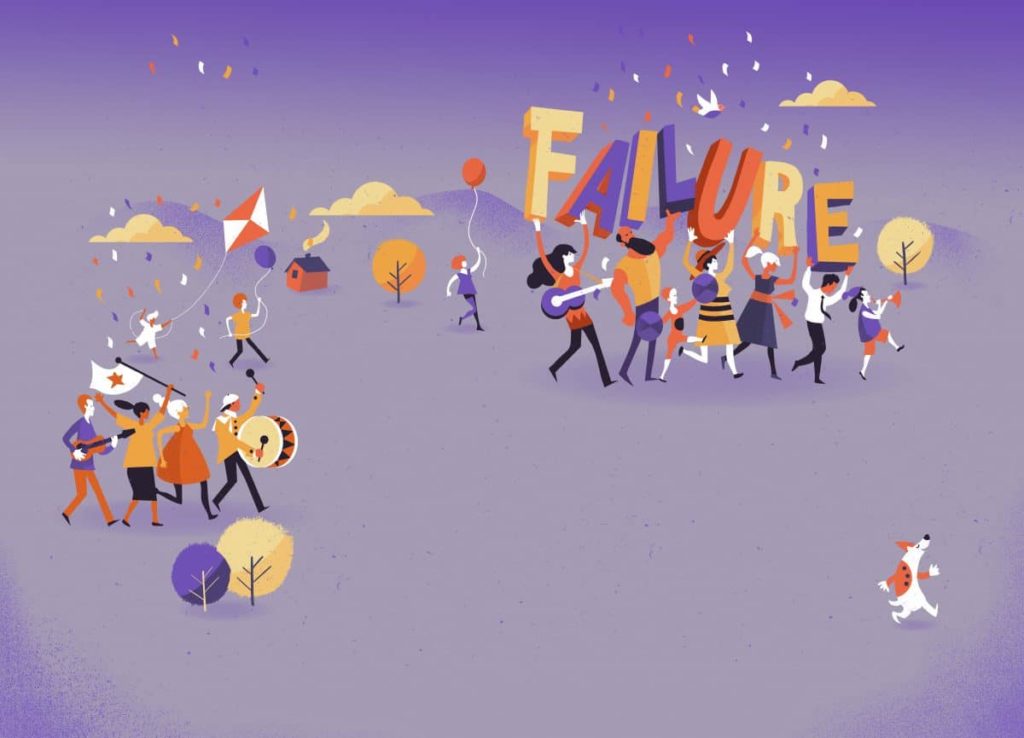Can You Benefit From Failure?
Top fit pros say the answer is . . . yes!

Failure: It’s the problematic F-word that the fitness industry rarely cares to discuss.
We’ve all experienced failure to one degree or another—and so have our clients. But you’d hardly know it. After all, this is an industry where being positive and motivating is our specialty. We push success, and we push it hard, leaving little room for clients to feel accepted and supported during periods of low success or even spectacular failure. Some people who fall off the workout wagon might simply feel safer fading away from fitness rather than answering to a trainer with a staunch #noexcuses attitude.
Across all industries, it’s common for tales of epic fails to be woven into success stories. In fact, you could argue that lessons learned from temporary setbacks are necessary for long-term success. Failure paves the way for greater self-awareness and more skillful practices. Acknowledging the possibility of failure—in our own careers and with clients’ progress—helps initiate a comforting support system that appears to be missing, or is at least underdeveloped, in the fitness industry. Addressing the issue head-on can only make us stronger.
Supporting Clients Through Failure
The fitness industry as a whole lacks an adequate approach for guiding clients through anything more than small stumbles, such as missing a few workouts or overindulging in junk food one night. There are relatively easy fixes for these. However, when a client stops exercising altogether or does it only sporadically or halfheartedly with minimal results, then what? An understandably common reaction among trainers and clients is disappointment and possibly shame. It’s difficult to acknowledge the F-word. Failure is painful, and sometimes it’s paralyzing.
“We tend to perpetuate a ‘false, upward-only trajectory’ in the fitness industry,” says Ingrid Knight-Cohee, MS, director of group fitness at Fitness World in Vancouver, British Columbia. “Fitness pros are enthusiastic about welcoming newcomers with open arms—’You can do it!—but not as adept at managing rough patches, such as client dropouts. Of course, people are ultimately responsible for their own actions, and trainers can only do so much to keep clients engaged. Nevertheless, the industry does make it seem as if once you start fitness, it’s all winning from there. This pretense is damaging.”
What Fit Pros Say
Knowing that people can fail, we could do more to prep clients for potential failure. We can give them a heads-up that it’s one glitch in the fitness journey, not the stop point. When we address the possibility of a significant setback with new and existing clients, we can help them leverage failure to eventually excel. “Setbacks are not dreaded events in the future that prove our ineptitude. They are critical to our evolving success,” says Robert Cappuccio, director of coaching for the Institute of Motion (IoM) and co-founder of PTA Global in Los Angeles.
“A good strategy for handling setbacks is to anticipate them, identify what they mean and prepare for them in advance rather than emotionally reacting to them when they unexpectedly occur,” says Cappuccio. Such a process isn’t about doling out “free passes” to skip through the program; it’s about empowering the client to proceed past low points.
“Personal trainers lay out a plan and encourage long-term commitment with the expectation of training a client on a certain cadence. Any interruption to that cadence is an opportunity to check in with goals and commitment,” says Knight-Cohee. “Ideally, the relationship has started with identifying barriers to progress in advance so the inevitable hiccups in the process can be proactively addressed and minimized. If a trainer is not attentive to this and doesn’t follow up, the client may well be lost and forgotten.”
The Failure Paradox
“It’s crazy, the paradox in our industry,” says Travis Barnes, CEO of Journey 333 and founder of FitBiz Mastery, based in Horseheads, New York. “We say one thing on the front end but usually deliver the opposite on the back end. When clients walk through the door of any gym, they are making a statement. The statement is, ‘I want extrinsic motivation because I can’t do this on my own.’ When we enroll these clients into our programs, we are saying, ‘We’ve got you! We are the solution to your fitness goals.’ We ask people to move more and eat better. It’s a simple recipe, so why doesn’t it work every time?”
Barnes believes the answer lies in a need for better support systems for managing clients with different personalities, mindsets and circumstances. For example, he recommends keeping an MIA report on clients who have dropped out. That way, you can reach out with understanding and a recommendation to make a plan for getting them back in the game. “When a client stops showing up, they become embarrassed and feel like they failed,” says Barnes. “Remember, we promised extrinsic motivation, so it is our job to remind them that failure is part of the process.”
Updated on August 31, 2021.
Amanda Vogel, MA
Amanda Vogel, MA, is a fitness professional and the owner of Active Voice, a writing, editing and consulting service for fitness professionals. She writes for IDEA, Health, Prevention, and Self, and has co-authored books on postnatal fitness and yoga. With a master's degree in human kinetics, Amanda has worked in the fitness industry for more than 15 years, including time spent as a program director and vice president for a chain of all-women clubs in Vancouver, British Columbia.






